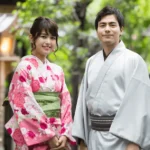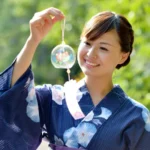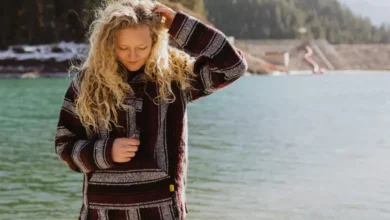It’s More Than Clothes. It’s a Way of Being.
You’ve seen the spectacular photos. You know the history. But what does it actually mean to dress like an authentic Tehuana woman?
First, a crucial point: this is not about creating a “look” for a party. It is about understanding and respecting a profound cultural practice. For the Zapotec women of the Isthmus of Tehuantepec, getting dressed—especially for a celebration—is a ritual. It is an art form passed down through generations, where every element has a purpose, a meaning, and a story.
This is not a “how-to” for outsiders to replicate the dress. Instead, this practical guide is a window into the intimate world of the Tehuana. It is a tribute to the thought, care, and pride that goes into assembling this iconic attire.
By understanding the “how,” we deepen our respect for the “why.”
See also Traditional Clothing in Japan
Traditional Clothing in Japan
In this article, you will learn:
- 🌿 The step-by-step process of dressing for a Vela (the grandest Zapotec celebration).
- 🌺 The meaning behind each element, from the undergarments to the final placement of gold.
- ✂️ The difference between a daily look and ceremonial attire in practice.
- ✨ The secrets of the hair, makeup, and accessories that complete the ensemble.
- 💚 Essential etiquette for appreciating this tradition with the utmost respect, whether you are a visitor or an admirer from afar.
Let’s step into the room where a Tehuana prepares, and witness the magic unfold.
The Philosophy: It All Starts from Within
Before a single piece of cloth is touched, the process begins with an attitude: pride. A Tehuana woman does not dress to please others. She dresses to represent herself, her family, and her culture. She dresses to feel powerful, beautiful, and connected to her roots.
The entire process can take over an hour. It is deliberate, unhurried, and filled with intention.
See also Traditional Japanese Clothing: Yukata
Traditional Japanese Clothing: Yukata
The Foundation: The Layers Beneath the Splendor
What you see is the spectacular outer layer, but the structure and comfort come from what’s underneath.
The Undergarments (Refajo and Enagua Sencilla)
- The Refajo: This is a simple, often white, cotton wrap-around skirt that is worn directly against the skin. It serves as a slip, absorbing sweat in the hot Isthmus climate and preventing the luxurious outer skirt from getting soiled.
- The Petticoat (Enagua Sencilla): Over the refajo, another cotton petticoat is worn. This one often has a small ruffle at the bottom. Its purpose is to give volume and shape to the outer skirt, ensuring it falls correctly.
The Huipil: The Heart of the Outfit
The huipil (the blouse) is chosen next. The choice depends on the occasion.
- For Daily Wear: A woman might choose a huipil de cadenilla (machine-embroidered) made of cotton or satin. It’s lighter and more comfortable for work or visiting the market.
- For a Gala (Vela): She will select a hand-embroidered huipil, usually made of rich velvet or silk. This is a treasured possession, often made by her or a family member, and can be a work of art that took months to create. The huipil is tucked into the skirt, creating a clean, seamless line at the waist.
The Enagua: The Flowering Skirt
The enagua (the outer skirt) is put on over the undergarments. This long skirt is the canvas for the dress’s most dramatic floral displays.
- Daily Skirt: A light cotton skirt with a printed floral pattern.
- Gala Skirt: A heavy velvet or silk skirt matching the huipil, with the same hand-embroidered flowers. At the bottom is the holán, a wide, starched white lace ruffle. The holán is a separate piece that is carefully sewn onto the bottom of the skirt for each major event and removed for washing. Its pristine white color and crispness are a sign of a woman’s care and cleanliness.
A Sign of Pride: A Tehuana woman’s holán is always impeccably white and perfectly starched. A limp or dirty holán is seen as a sign of neglect.

The Crowning Glory: Hair, Makeup, and the Resplandor
The face and head are the focal point of the ensemble. This is where a woman displays her individual style and her connection to tradition.
The Hair: A Braided Masterpiece
The hair is never left loose. It is an integral part of the look.
- The Two Braids: A woman’s long black hair is parted in the middle and woven into two thick braids.
- The Silk Ribbons: Brightly colored silk or satin ribbons are then expertly woven into the braids.
- The Tocado: The braids are then coiled and pinned on top of the head, creating a crown-like structure. This is not just a hairstyle; it’s a tocado, a built-in headdress.
The Makeup: Bold and Confident
The makeup of a Tehuana is not subtle. It is as bold and colorful as her dress.
- Face: A clean base with powdered skin.
- Cheeks: A generous application of bright pink or red blush.
- Eyes: Often simple, to let the lips and cheeks stand out.
- Lips: A strong, defined red lipstick is classic.
The Huipil Grande or Resplandor (For Ceremonies Only)
This is the most sacred and distinctive element, worn only for important religious events and processions.
- How it’s worn for church: The resplandor is placed over the head and shoulders like a cape, with the face peeking through the lace opening. It creates an aura of reverence and modesty.
- How it’s worn for parades/fiestas: After the church service, it is flipped back. The main body of the headdress rests on the back, and the ruffled lace edge stands up behind the head like a magnificent halo. This signals a shift from solemnity to celebration.
Important Note: The resplandor is never worn as a fashion accessory. It is a ceremonial garment with deep religious and cultural significance.
The Final Touch: A Cascade of Gold and Flowers
The accessories are the final—and often most significant—part of dressing. They are a display of a woman’s wealth, her family’s history, and her personal taste.
The Gold Jewelry (Juchi Oru)
Gold is the ultimate status symbol in the Isthmus. A woman’s gold is her own; she inherits it, buys it, and it represents her economic independence.
- Ahogadores: Short, choker-style necklaces, often made of linked gold coins or filigree work.
- Dólares: Long chains adorned with gold coins from around the world (American dollars, English sovereigns), a testament to the Isthmus’s history as a trade hub.
- Earrings: Long, dangling earrings, often with intricate filigree.
- Bracelets and Rings: Worn generously.
A woman might wear several kilos of gold to a major Vela. It is her portable wealth and her family’s pride.
The Fresh Flowers
For some events, fresh flowers are tucked into the hair, adding their fragrance and color to the ensemble.
The Fan and the Handkerchief
A decorated fan is both a practical tool against the heat and an elegant accessory. A delicate handkerchief is often carried as well.
A Practical Guide to Dressing: Summary Table
| Step | Daily Attire | Gala / Ceremonial Attire |
|---|---|---|
| 1. Undergarments | Refajo (cotton slip skirt) | Refajo and a starched petticoat for volume. |
| 2. Huipil | Cotton or satin, machine-embroidered (cadenilla). | Velvet or silk, hand-embroidered with large flowers. |
| 3. Enagua | Printed cotton skirt. | Matching velvet/silk skirt with a starched lace holán. |
| 4. Hair | Usually a single braid. | Two braids coiled on top of the head with interwoven silk ribbons. |
| 5. Makeup | Minimal or natural. | Bold, with bright blush and red lips. |
| 6. Headdress | Not typically worn. | The huipil grande or resplandor for mass and processions. |
| 7. Jewelry | Simple gold earrings or a small necklace. | A full display of gold: ahogadores, coin necklaces, long earrings, bracelets. |
| 8. Accessories | A rebozo for practical use. | An elegant fan, a handkerchief. |
The Meaning Behind the Action: What It Feels Like
To an outsider, this might seem like an elaborate costume. To a Tehuana woman, it is an embodiment of her identity.
- Putting on the gold is like wearing her family’s history and her own economic power.
- Coiling her hair is an act of crowning herself.
- Stepping into the enagua de gala is like rooting herself in the fertile ground of her culture.
The weight of the velvet and the gold is not a burden; it is a grounding force. It makes her walk slower, more deliberately, with a regal posture. The entire process of dressing is a meditation on who she is, where she comes from, and the community she represents.
A Guide for Visitors and Admirers: How to Be Respectful
You may be lucky enough to witness a Vela in the Isthmus, or you may simply admire this tradition from afar. In either case, respect is key.
✅ DO:
- Ask Before You Photograph: Always. These are people in a sacred or celebratory moment, not models. A smile and a polite question go a long way.
- Learn the Names: Call the pieces by their names: huipil, enagua, resplandor. It shows you’ve done your homework.
- Compliment with Specificity: Instead of “nice costume,” say “Your embroidery is beautiful” or “The way you’ve woven your ribbons is incredible.” This acknowledges the artistry.
- Support Economically: If you buy a textile, buy it directly from an artisan and pay a fair price.
❌ DON’T:
- Never Touch Without Permission: Do not touch a woman’s dress, her hair, or her jewelry. It is an invasion of her personal and cultural space.
- Do not wear a full replica of the gala attire if you are not from the community or have not been explicitly invited to do so for a specific event. It is not a costume.
- Do not reduce the attire to “Frida Kahlo’s dress.” This erases the Zapotec women who are the living heart of this tradition.
Final Thought: A Dress Worn with the Soul
To dress like an authentic Tehuana woman is not about following a set of instructions. It is about understanding a worldview. It is about seeing your clothing as an extension of your identity, your history, and your strength.
The rustle of the starched holán, the glint of gold coins, the scent of fresh flowers in braided hair—these are the sensory details of a culture that wears its heart, its art, and its power on its sleeve.
It is a profound and beautiful lesson for a world of fast fashion: that what we wear can, and should, mean something. It should tell the world not just who we want to be, but who we have always been.
💌 Inspired by this deep dive into cultural practice? Share it to foster a greater respect for the world’s traditional attire.
✨ Ready for the next story? We will now travel from the matriarchal south of Oaxaca to the legendary heart of Puebla to meet the China Poblana.



